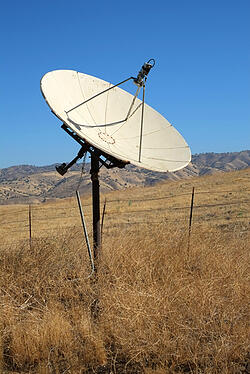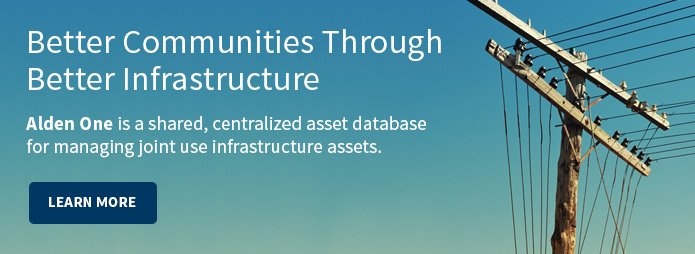Rural Broadband: Community Benefits, Effects on Utility Pole Owners
 In the age of streaming video and multi-player online games, the always-on connectivity and speed of broadband Internet at home is becoming the norm for most people in the U.S. Notice we said “most.” According to AOL, more than 2.5 million people still subscribe to their dialup service; that’s a drop of 15 percent from the same quarter in 2012, but it is a significant number of people still listening to the whine of a modem.[1]
In the age of streaming video and multi-player online games, the always-on connectivity and speed of broadband Internet at home is becoming the norm for most people in the U.S. Notice we said “most.” According to AOL, more than 2.5 million people still subscribe to their dialup service; that’s a drop of 15 percent from the same quarter in 2012, but it is a significant number of people still listening to the whine of a modem.[1]
Who are these people for whom downloading an album takes hours? According to a study completed by the United States Department of Agriculture Economic Research Service, they live in small towns that have experienced population loss due to aging citizenry and in places with rough terrain where residents are dispersed over large areas. They live in the Dakotas, in northern Minnesota and eastern Oregon. Most importantly however, they live on the edge of a society for whom the Internet age has changed everything.[2]
Broadband’s Benefits to Rural America
According to the study, the growth of high-speed Internet has altered the way we live, work and play, including in these key areas:
Education: From online college degrees to a rise in primary and secondary courses on the web, broadband has significantly increased educational opportunities for rural and isolated individuals. Having internet access at home allows parents to more candidly communicate with teachers at brick and mortar schools.
Healthcare: Telemedicine and telehealth have been celebrated as vital to health care in rural communities. These technologies offer more accessible health information, expand the range of medical services available, and treat emergencies more efficiency. One study of 24 rural hospitals actually placed the annual cost of not having telemedicine at $370,000 per hospital.[3]
Employment: In addition to allowing companies to tap a wider candidate pool, job seekers can also learn more about and apply for more open positions more quickly and efficiently via broadband Internet. The rise of the Internet in general has also led to new sources of supplemental income for some families. From eBay to Etsy and beyond, crafts, used items, art to automobiles now easily find a global, year-round audience.
Commerce: While it is unclear whether business trips have declined since videoconferencing became a more viable option, the country’s appetite for e-commerce has exploded. According to Internet Retailer Magazine, 65 percent of shoppers use the Internet to browse online before buying in-store.[4] Coupled with a typical 13 to 15 percent increase in online shopping during the holidays[5], that is a lot of clicking to purchase.
Broadband’s Effects on Utility Pole Owners
One thing about broadband adoption across the rural U.S. is certain: it is coming, and swiftly. The FCC is currently sorting through 1000-plus inquiries from communities about where broadband is most wanted. The question is: Are your joint use management processes ready for the new attachment requests, new partners to communicate with and the new load on your poles? Only 41 percent of adults in rural households had broadband access in 2008.[6] According to our government, most of the other 59 percent want it. How will you get a handle on the impending flood of attacher requests? Here are a few suggestions:
- Inventory your equipment via a comprehensive field inventory that maps all utility poles, catalogs all attachers and assesses the operational viability of all assets.
- Get organized through a database of your utility poles. Have your company and all attachers use an integrated, intuitive joint use management software system.
- Start talking to attachers and partners in an efficient, effective manner by using connective joint use asset management software that offers on-demand access to documents, contracts, job status and other vital records associated with all jointly held assets.
Broadband is coming to rural America. It will change our communities and improve the way we work, learn and live. Is your joint use department ready?
[1] http://www.washingtonpost.com/blogs/the-switch/wp/2013/08/07/the-slow-death-of-dial-up-2-percent-of-us-still-use-aol/
[2] Stenberg, Peter. Broadband Internet’s Value for Rural America. United States Department of Agriculture, Economic Research Service.
[3] Stenberg, Peter. Broadband Internet’s Value for Rural America. United States Department of Agriculture, Economic Research Service.
[4] http://www.internetretailer.com/2013/10/07/shoppers-will-browse-online-and-buy-store-over-holidays
[5] https://www.nrf.com/modules.php?name=Pages&sp_id=1140
[6] Stenberg, Peter. Broadband Internet’s Value for Rural America. United States Department of Agriculture, Economic Research Service.

Comments